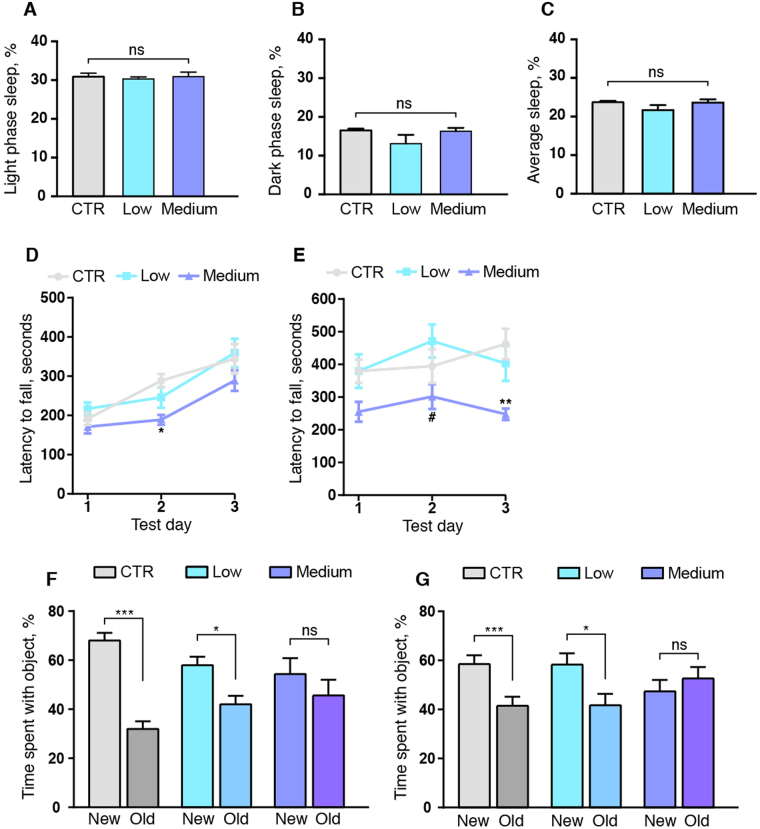Figure 4.
Long term exposure to 1.5 g/kg alcohol does not affect sleep but impairs motor and learning skills. Immobility-defined sleep duration in saline (CTR), 0.5 g/kg (low) and 1.5 g/kg (medium) alcohol treatment groups did not show any difference between the groups for (A) light phase sleep, (B) dark phase sleep or (C) mean sleep duration. Alcohol was administered at 9 am, three hours into the light phase. Latency to fall of the Rota-Rod (D) at 24 hours after withdrawal from 30 days chronic alcohol exposure or (E) with acute alcohol challenge following 30 days of chronic exposure. 2-way ANOVA with Tukey test compared to saline treatment or low dose alcohol. *p < 0.05, **p < 0.01 compared to saline. #p < 0.05 compared to low dose. Novel object test at (F) 24 hours after withdrawal from chronic alcohol exposure and (G) acutely affected by alcohol following 15–28 days of chronic exposure. New objects had never previously been seen by the mouse, and old objects had been introduced to the mouse for first examination for ten minutes at a time one hour prior to testing on the same experimental day. Student’s t-test comparing percentage time spent exploring new and old object. CTR, saline; low, 0.5 g/kg ethanol; medium, 1.5 g/kg ethanol. Ns, not significant, *p < 0.05, **p < 0.01, ***p < 0.001. Bar graphs represent mean and standard error of the mean (SEM) of 4 mice per group for sleep analysis, 11–21 mice per group for novel object test and plots represent mean and SEM of 15–25 mice for Rota-Rod test.

